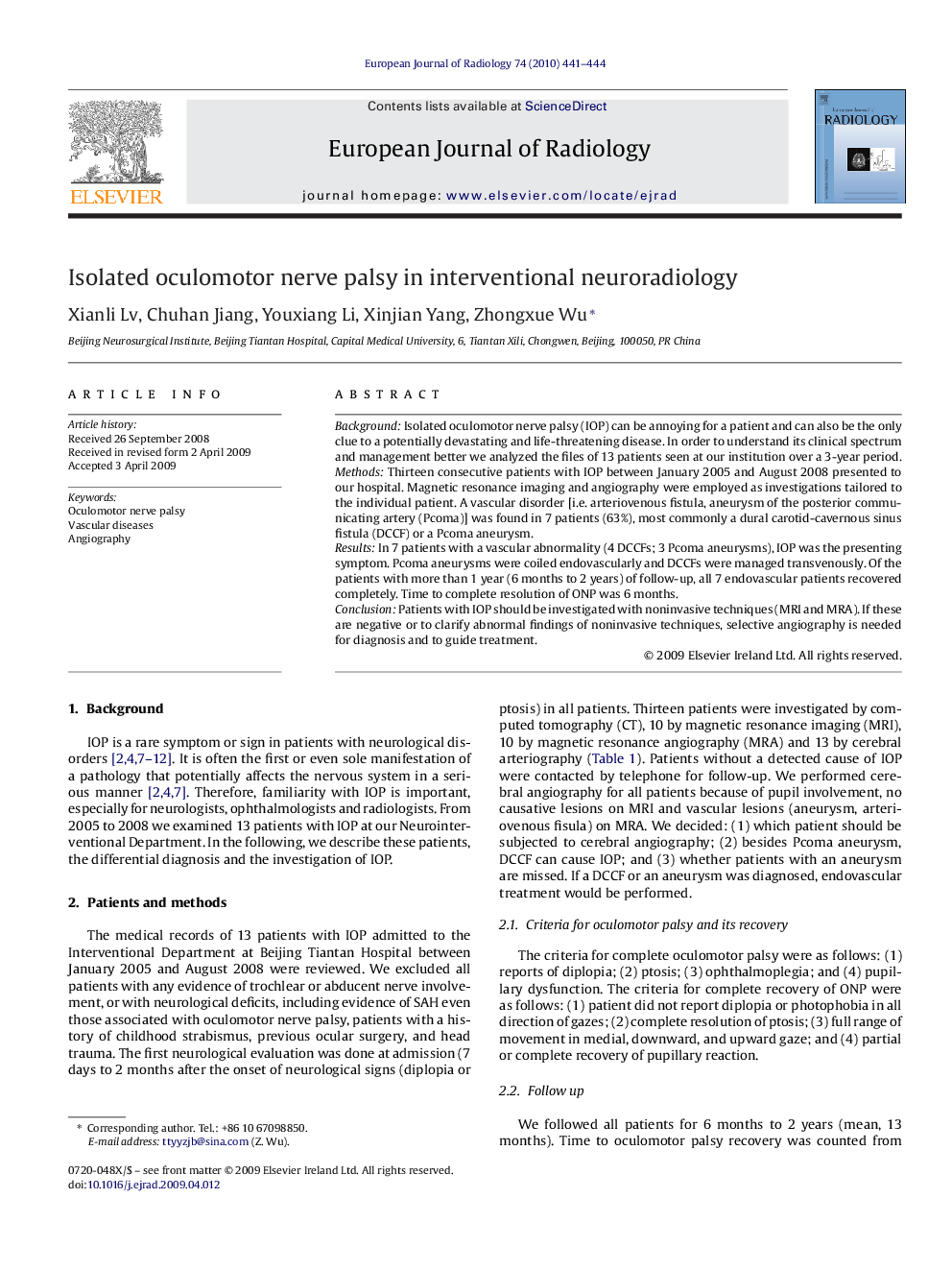| Article ID | Journal | Published Year | Pages | File Type |
|---|---|---|---|---|
| 4227471 | European Journal of Radiology | 2010 | 4 Pages |
BackgroundIsolated oculomotor nerve palsy (IOP) can be annoying for a patient and can also be the only clue to a potentially devastating and life-threatening disease. In order to understand its clinical spectrum and management better we analyzed the files of 13 patients seen at our institution over a 3-year period.MethodsThirteen consecutive patients with IOP between January 2005 and August 2008 presented to our hospital. Magnetic resonance imaging and angiography were employed as investigations tailored to the individual patient. A vascular disorder [i.e. arteriovenous fistula, aneurysm of the posterior communicating artery (Pcoma)] was found in 7 patients (63%), most commonly a dural carotid-cavernous sinus fistula (DCCF) or a Pcoma aneurysm.ResultsIn 7 patients with a vascular abnormality (4 DCCFs; 3 Pcoma aneurysms), IOP was the presenting symptom. Pcoma aneurysms were coiled endovascularly and DCCFs were managed transvenously. Of the patients with more than 1 year (6 months to 2 years) of follow-up, all 7 endovascular patients recovered completely. Time to complete resolution of ONP was 6 months.ConclusionPatients with IOP should be investigated with noninvasive techniques (MRI and MRA). If these are negative or to clarify abnormal findings of noninvasive techniques, selective angiography is needed for diagnosis and to guide treatment.
